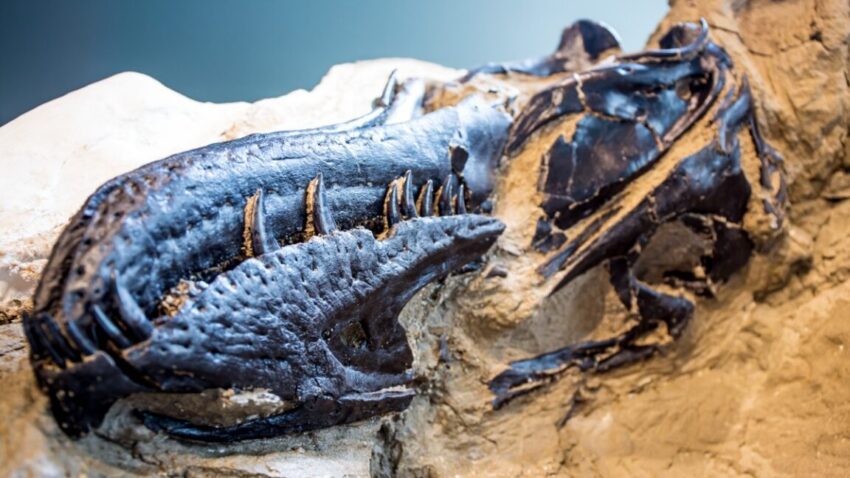
new study settles 40-year debate nanotyrannus is A recent study has definitively classified Nanotyrannus as a distinct dinosaur species, resolving a long-standing debate in paleontology.
new study settles 40-year debate nanotyrannus is
Background of the Debate
For over 40 years, paleontologists have been embroiled in a contentious debate regarding the classification of certain rare dinosaur fossils. This debate centers around a small number of specimens that have been the subject of intense scrutiny and differing interpretations. One faction of researchers has long argued that these fossils are juvenile specimens of the well-known Tyrannosaurus rex, while another group has maintained that they represent a new species, which they have named Nanotyrannus lancensis.
The implications of this debate extend beyond mere taxonomy; they touch upon our understanding of dinosaur growth, behavior, and diversity. The classification of these fossils has significant ramifications for how paleontologists model the life history of T. rex and its relatives. If these specimens are indeed juvenile T. rex, it would suggest a different growth trajectory for the species than if they are a separate genus altogether.
New Findings in Paleontology
In a groundbreaking study published in the journal Nature, researchers have provided compelling evidence that Nanotyrannus is indeed a valid taxon, separate from T. rex. The study was led by a team of paleontologists, including Lindsay Zanno, a prominent figure in the field and head of paleontology at North Carolina State University and the North Carolina Museum of Natural Sciences.
According to Zanno, “This fossil doesn’t just settle the debate; it flips decades of T. rex research on its head.” The new analysis was based on a well-preserved fossil that has been meticulously examined using advanced techniques, including CT scanning and morphological comparisons with other known dinosaur species. The findings indicate that there are not just one but two distinct species within the Nanotyrannus genus.
Details of the Study
The study’s authors conducted a thorough examination of the fossil specimens, focusing on key morphological features that differentiate Nanotyrannus from T. rex. These features include differences in skull shape, limb proportions, and overall body size. The researchers utilized a combination of traditional paleontological methods and modern imaging techniques to analyze the fossils in unprecedented detail.
One of the significant revelations from the study is the reclassification of another specimen as a second new species, distinct from N. lancensis. This finding underscores the complexity of tyrannosaur diversity during the Late Cretaceous period, suggesting that multiple species may have coexisted and adapted to different ecological niches.
Implications for Dinosaur Research
The implications of this research are profound. For decades, paleontologists have relied on juvenile specimens to model the growth and behavior of T. rex. The new findings challenge the long-held assumption that these smaller fossils were merely young versions of the iconic predator. Instead, the existence of Nanotyrannus as a separate species suggests that the diversity of tyrannosaurs has been underestimated.
This new understanding could lead to a reevaluation of how paleontologists interpret the fossil record. If multiple species of tyrannosaurs existed, it raises questions about their ecological roles, behaviors, and interactions with other species. For instance, how did these different species coexist? What were their dietary preferences? Did they exhibit different hunting strategies? These questions open up new avenues for research and exploration in the field of paleontology.
Reactions from the Scientific Community
The response from the paleontological community has been overwhelmingly positive, with many experts expressing excitement about the findings. The study has sparked renewed interest in the diversity of theropod dinosaurs and has prompted researchers to revisit existing collections of fossils with a fresh perspective.
Dr. Thomas Carr, a paleontologist at Carthage College, commented on the significance of the study, stating, “This research is a game-changer. It not only clarifies the status of Nanotyrannus but also encourages us to reconsider our assumptions about dinosaur diversity.” Carr emphasized that the findings could lead to a more nuanced understanding of the evolutionary relationships among theropods.
Future Research Directions
As the debate over Nanotyrannus reaches a resolution, the focus of future research is likely to shift toward understanding the ecological dynamics of the Late Cretaceous period. Researchers may explore the interactions between different tyrannosaur species, as well as their relationships with other contemporary dinosaurs.
Additionally, the methodologies employed in this study could serve as a model for future paleontological research. The integration of advanced imaging techniques with traditional morphological analysis may provide new insights into other contentious classifications within the dinosaur family tree.
Broader Context of Dinosaur Diversity
The confirmation of Nanotyrannus as a distinct species is part of a broader trend in paleontology that emphasizes the complexity of dinosaur diversity. Recent studies have increasingly highlighted the existence of multiple species within well-known genera, challenging the notion of a monolithic view of dinosaur evolution.
For example, the discovery of new species within the Hadrosauridae family has reshaped our understanding of duck-billed dinosaurs, while ongoing research into theropod diversity continues to reveal a rich tapestry of adaptations and evolutionary strategies. The case of Nanotyrannus serves as a reminder that the fossil record is often more intricate than it appears, and that our understanding of prehistoric life is continually evolving.
Conclusion
The resolution of the Nanotyrannus debate marks a significant milestone in paleontological research. As scientists continue to uncover new fossils and apply innovative techniques, our understanding of dinosaur diversity and evolution will undoubtedly deepen. The confirmation of Nanotyrannus as a distinct species not only enriches the narrative of tyrannosaur evolution but also encourages a more comprehensive exploration of the ecological dynamics of the Late Cretaceous period.
As researchers build upon these findings, the implications for our understanding of dinosaur behavior, growth, and diversity will likely resonate throughout the field for years to come. The study serves as a testament to the importance of rigorous scientific inquiry and the ongoing quest to unravel the mysteries of our planet’s prehistoric past.
Source: Original report
Was this helpful?
Last Modified: October 30, 2025 at 11:37 pm
0 views















